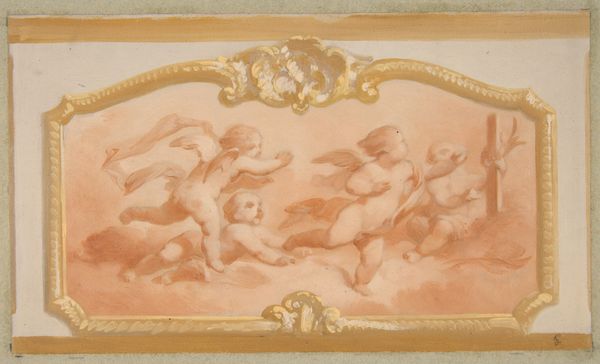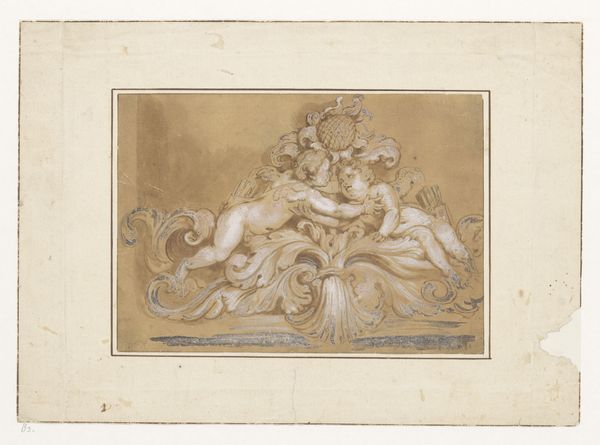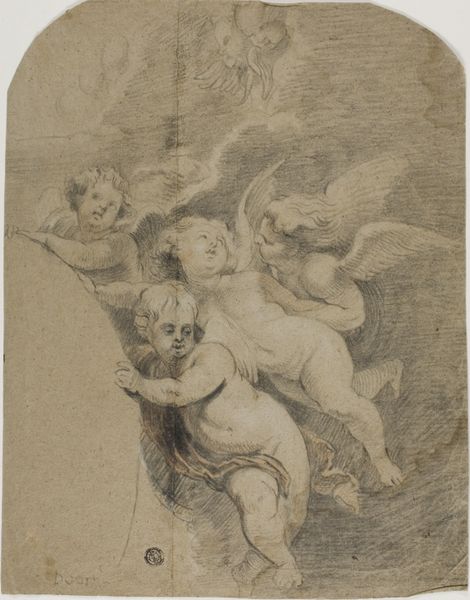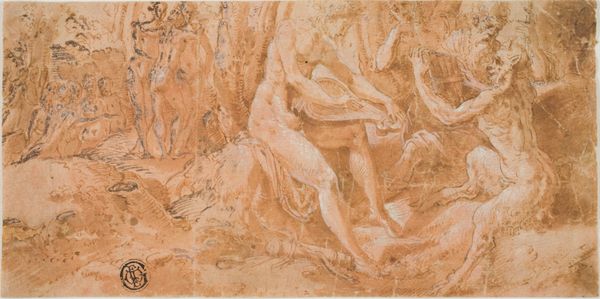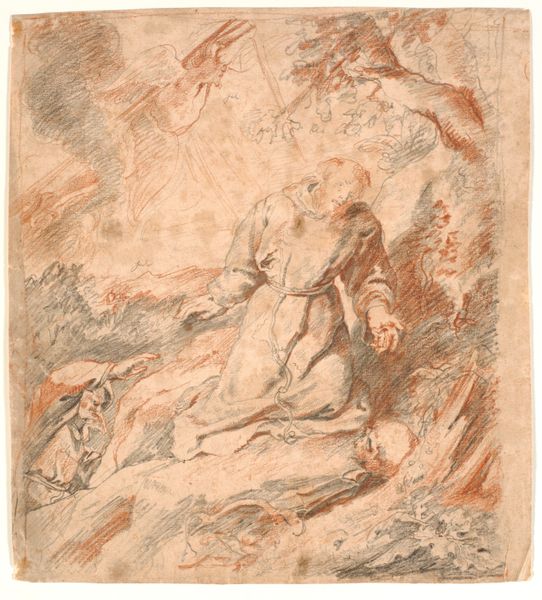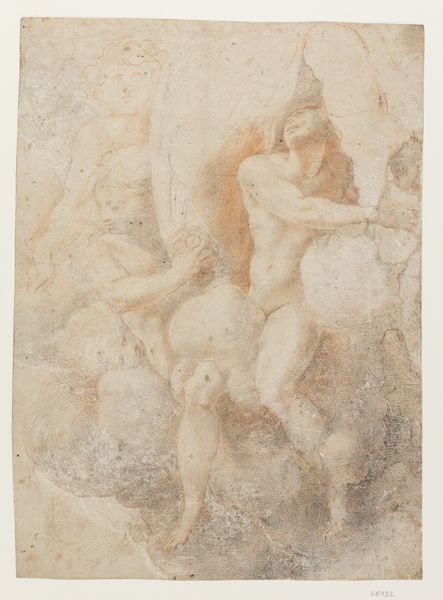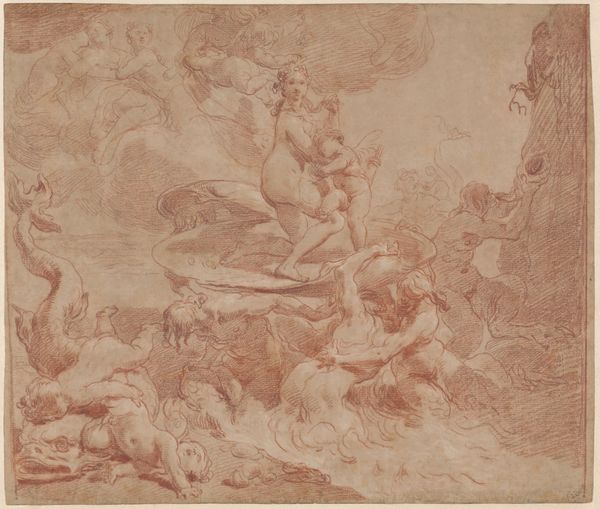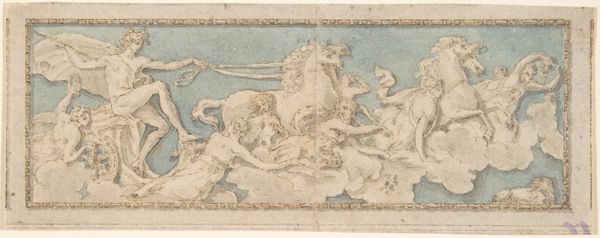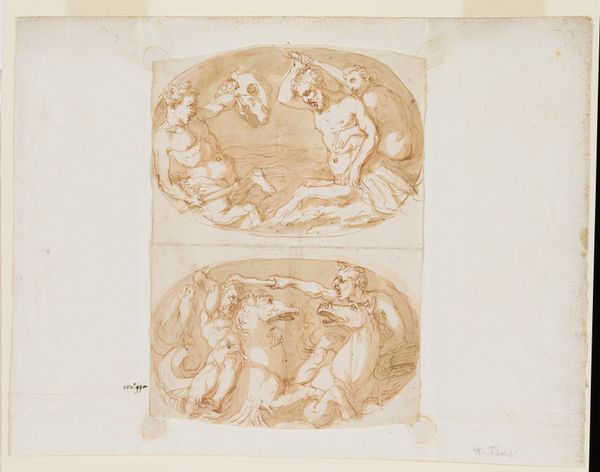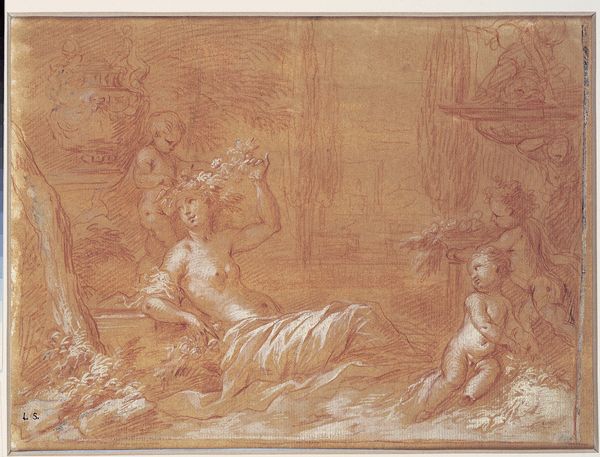
drawing, oil-paint, charcoal
#
drawing
#
baroque
#
oil-paint
#
landscape
#
charcoal drawing
#
oil painting
#
charcoal
#
realism
Dimensions: 189 mm (height) x 290 mm (width) (bladmaal)
Editor: This artwork is an anonymous piece called "Slagscene med heste og to ryttere," placing it somewhere between 1600 and 1700. It looks like a drawing composed with charcoal and oil-paint, currently housed here at the SMK. What immediately strikes me is the implied movement and dynamic composition, even though the colors are quite muted. What do you see in this piece from a formalist perspective? Curator: Precisely, the dynamic arrangement is key. Note how the artist employs diagonal lines and overlapping forms to generate a sense of chaotic energy, which speaks to the very nature of battle scenes. Furthermore, examine the contrast between the loosely rendered background and the relatively more defined foreground figures of horses and riders. This juxtaposition creates a visual hierarchy, guiding the viewer’s eye through the tumultuous scene. Editor: I'm interested in that contrast. Does that contrast draw our eyes to specific point to focus on in order to draw a deeper message? Curator: From a formal standpoint, that hierarchy emphasizes formal qualities of the piece, such as how light and shadow interact across textured surfaces, not the contextual underpinnings of this period.. Observe how the highlights on the horses' bodies accentuate their muscular forms, conveying a sense of power and movement. Meanwhile, the shadowy areas recede into the background, creating depth and atmosphere. The tension, in effect, is less thematic and more formal. Editor: So, less about *what* is happening and more about *how* it's depicted? Curator: Precisely. This approach isn't concerned with the narrative the painting could be implying, but rather it considers its impact based purely on visual elements like form, line, color and texture. A painting from any historical period can elicit response depending on use of certain form even with varied symbolism throughout art history. Editor: This formalist lens really changes how I perceive art, highlighting elements I previously overlooked! Curator: Indeed. Focusing on these internal relationships enhances our aesthetic experience. It's about appreciating art for art's sake.
Comments
No comments
Be the first to comment and join the conversation on the ultimate creative platform.
